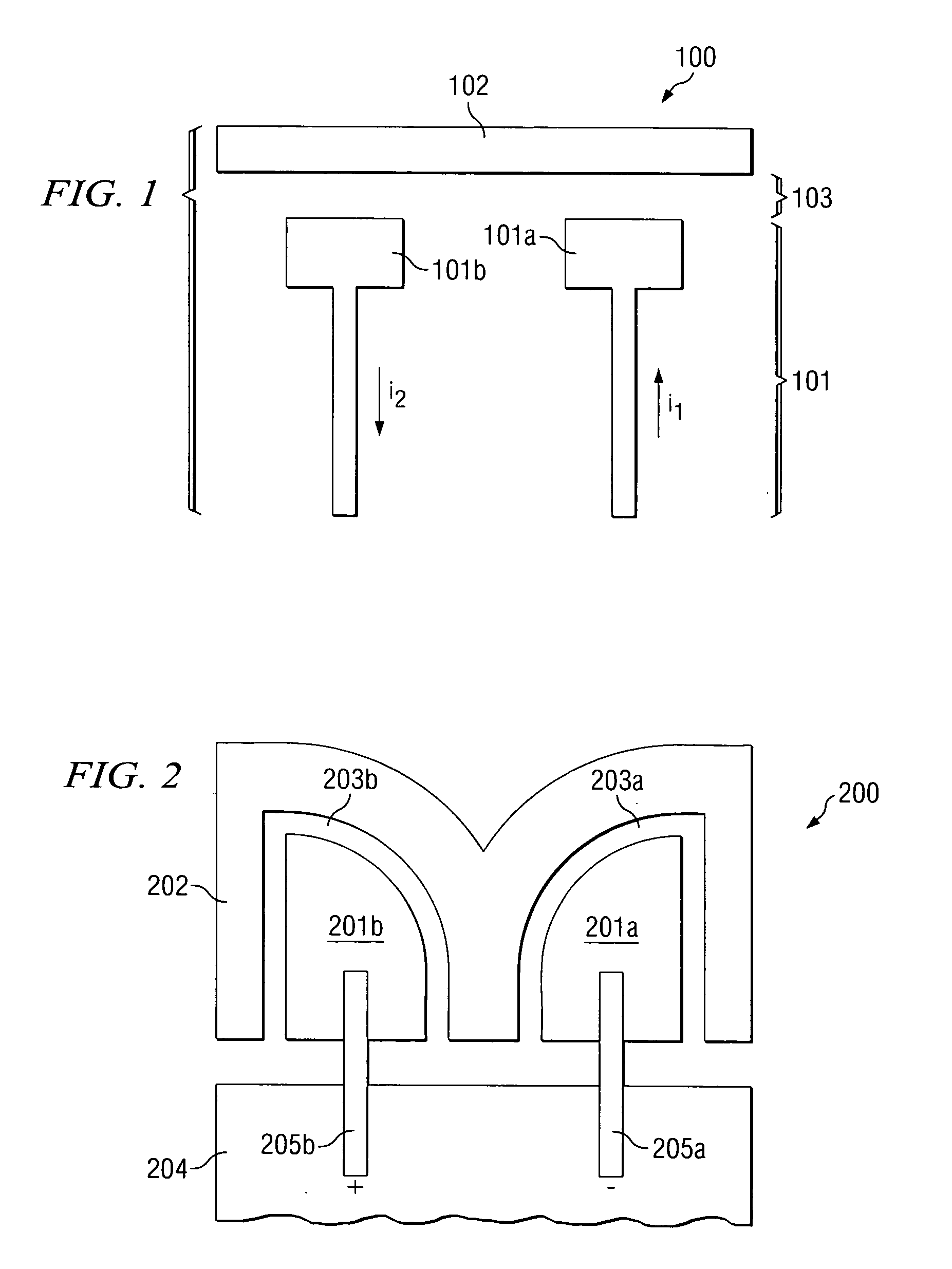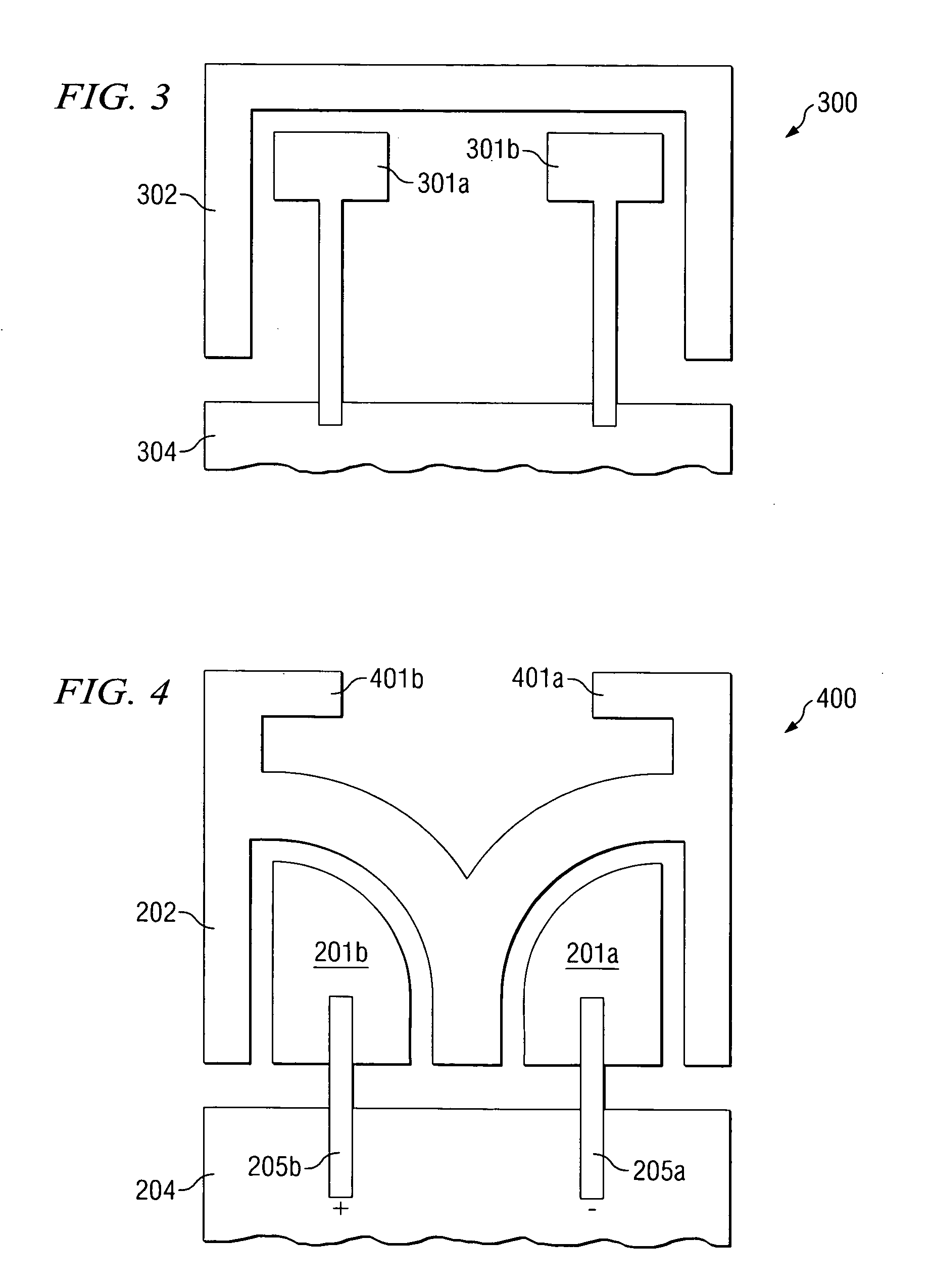Miniature balanced antenna with differential feed
- Summary
- Abstract
- Description
- Claims
- Application Information
AI Technical Summary
Benefits of technology
Problems solved by technology
Method used
Image
Examples
Embodiment Construction
[0020]FIG. 1 is an illustration of exemplary antenna system 100 adapted according to one embodiment of the invention. System 100 includes metallic fed element 101 and metallic parasitic element 102. Individual fed element 101a and 101b are “balanced” in that their currents (or potentials) are equal in magnitude and completely out of phase along their respective paths. Accordingly, it is also true that fed element 101 is a differential structure, with one side acting as a “+” side and the other side acting as a “” side. Gap 103 is a dielectric gap and may include air, plastic, fiberglass, or other dielectric materials.
[0021]Metallic element 102 is a parasitic element that is symmetrical with respect to the polarity of fed element 101 and is separated therefrom by gap 103. Parasitic element 102 has one or more resonating frequencies, and when RF signals are provided to fed element 101 at a resonating frequency, parasitic element 102 resonates due to capacitive coupling. Fed element 10...
PUM
 Login to View More
Login to View More Abstract
Description
Claims
Application Information
 Login to View More
Login to View More - R&D
- Intellectual Property
- Life Sciences
- Materials
- Tech Scout
- Unparalleled Data Quality
- Higher Quality Content
- 60% Fewer Hallucinations
Browse by: Latest US Patents, China's latest patents, Technical Efficacy Thesaurus, Application Domain, Technology Topic, Popular Technical Reports.
© 2025 PatSnap. All rights reserved.Legal|Privacy policy|Modern Slavery Act Transparency Statement|Sitemap|About US| Contact US: help@patsnap.com



